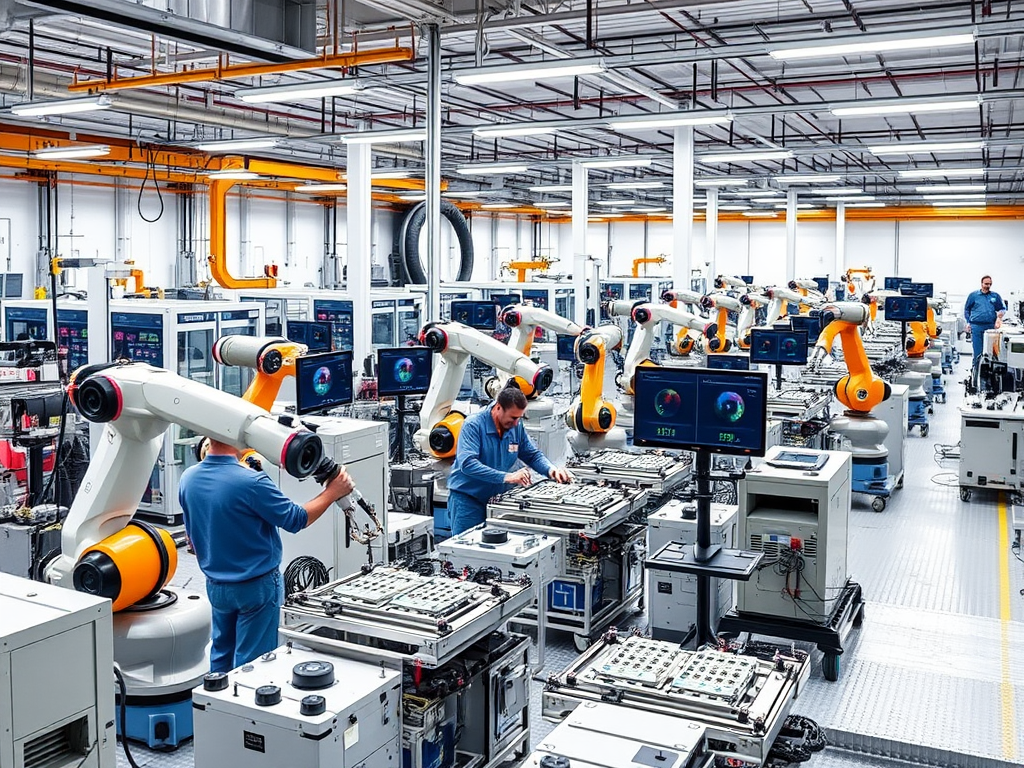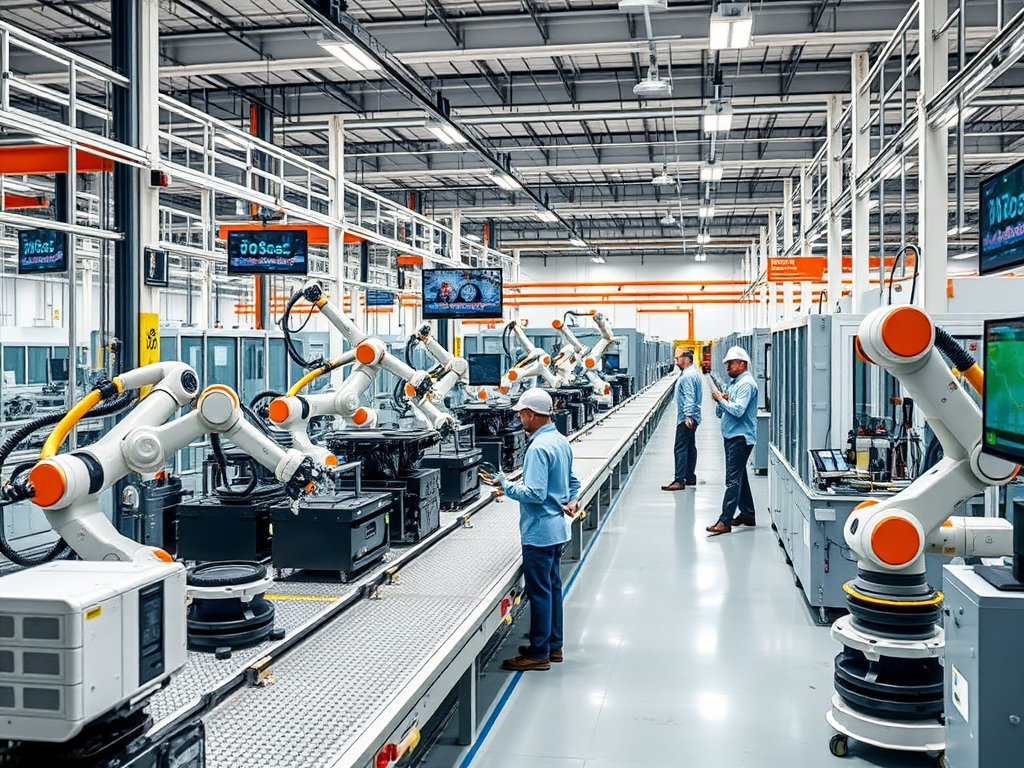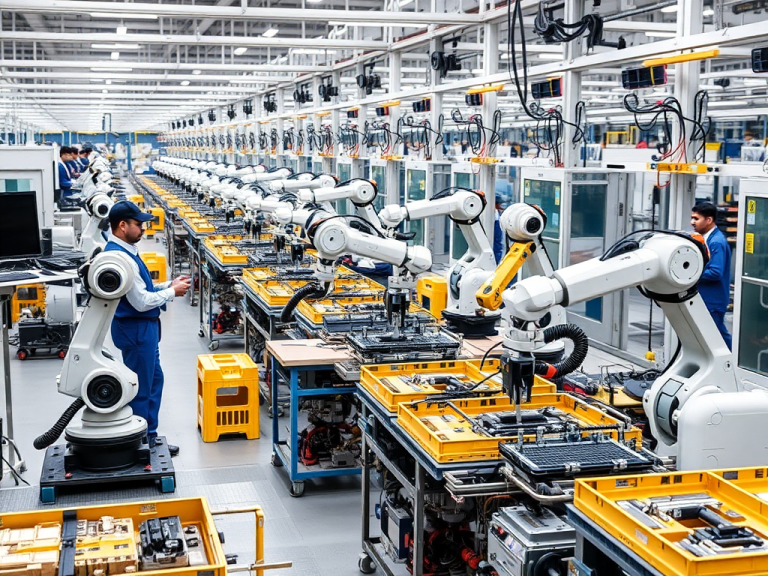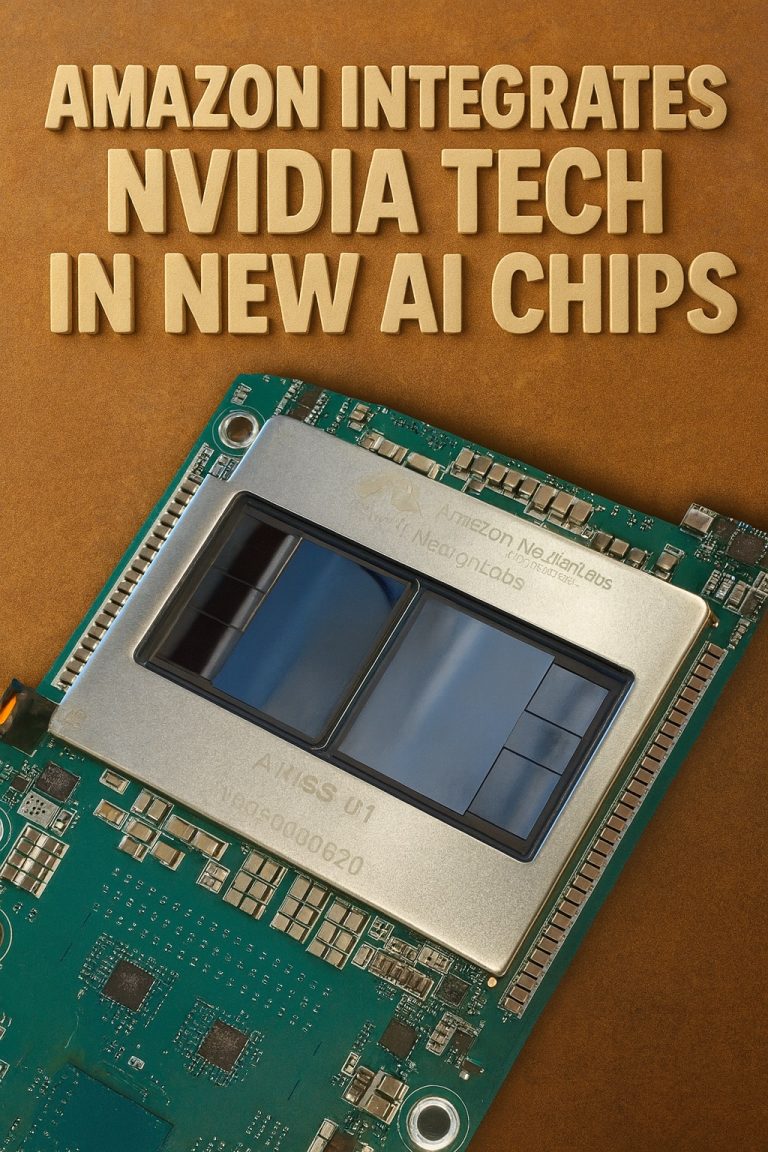
Automation is significantly changing the way products are made in factories. By using technology to perform tasks that people used to do, manufacturing is becoming faster, more efficient, and often safer. This article explores how automation is impacting the manufacturing industry, its benefits, challenges, and what the future may hold.
What is Automation in Manufacturing?
Automation in manufacturing refers to the use of technology, such as robots and software, to perform tasks without human intervention. This shift from manual labor to automated processes has transformed many aspects of production. Here are some key technologies driving this change:
- Robots: These machines can perform a variety of tasks, such as assembling parts, welding, painting, and packaging products. Robots can work quickly and accurately, helping to boost production rates while reducing errors. They can also operate in hazardous environments, which keeps human workers safe from dangerous conditions.
- Internet of Things (IoT): IoT involves connecting machinery and equipment to the internet, allowing them to communicate and share data. For example, sensors can monitor machine performance in real time, alerting operators to potential issues before they become serious problems. This capability helps with predictive maintenance, reducing downtime and improving overall efficiency.
- Artificial Intelligence (AI): AI systems analyze large amounts of data to make better decisions about production processes. For instance, AI can optimize supply chains by predicting customer demand, allowing manufacturers to adjust their production levels accordingly. This flexibility helps companies respond quickly to market changes.
- 3D Printing: Also known as additive manufacturing, this technology creates products layer by layer from digital designs. 3D printing allows for rapid prototyping and the production of complex shapes that traditional manufacturing methods may struggle to achieve. It also reduces waste since only the necessary material is used.
Benefits of Automation
The shift to automation in manufacturing brings numerous advantages:
- Higher Efficiency: Automated machines can work faster than human workers and can operate continuously without breaks. This leads to increased production rates and the ability to meet higher demand.
- Cost Savings: Although the initial investment in automation technology can be high, the long-term savings often outweigh these costs. Reduced labor costs, fewer mistakes, and better resource management can lead to significant financial benefits over time.
- Better Quality Control: Automated systems maintain consistent quality and precision in production. This reduces the likelihood of defects and ensures that products meet strict quality standards.
- Flexibility and Scalability: Automation allows manufacturers to adapt quickly to changing market demands. They can scale production up or down easily, producing smaller batches or customized products without a major overhaul of their systems.
- Safer Workplaces: By taking over dangerous tasks, automation enhances workplace safety. Robots can handle heavy lifting, operate in extreme temperatures, or work with hazardous materials, reducing the risk of injury to human workers.

Challenges of Automation
Despite its many benefits, automation comes with challenges that manufacturers need to address:
- High Initial Costs: The upfront costs of purchasing and implementing automation systems can be a barrier, particularly for small and medium-sized enterprises (SMEs). However, businesses often find that these costs are offset by long-term savings.
- Job Displacement: One of the most significant concerns about automation is the potential for job losses. As machines take over tasks traditionally performed by humans, there is a risk of unemployment in certain sectors. This has led to calls for reskilling programs to help displaced workers find new opportunities.
- Integration Issues: Integrating new technologies into existing systems can be complex. Manufacturers may need to invest time and resources into training staff and updating processes to fully benefit from automation.
- Cybersecurity Risks: Increased connectivity through IoT devices raises concerns about data security. Cyberattacks on manufacturing systems can lead to disruptions and financial losses, making cybersecurity a top priority for manufacturers.
The Future of Automation in Manufacturing
The future of automation in manufacturing is bright, with many exciting developments on the horizon:
- Collaborative Robots (Cobots): These robots are designed to work alongside humans, assisting with repetitive tasks while allowing workers to focus on more complex and creative activities. Cobots enhance productivity without replacing human jobs.
- Smart Factories: The concept of smart factories involves integrating advanced technologies to create highly automated and interconnected production environments. These factories use data analytics and AI to optimize every aspect of the manufacturing process, from supply chain management to quality control.
- Sustainability: As the world becomes more focused on environmental issues, automation technologies are increasingly being developed with sustainability in mind. Energy-efficient machines and processes reduce waste and lower carbon footprints, making manufacturing more environmentally friendly.
- Customization: Automation enables manufacturers to offer more personalized products to consumers. With the ability to quickly adapt production lines, companies can create custom items tailored to individual customer preferences while maintaining efficiency.
Conclusion
Automation is transforming manufacturing by making it faster, more cost-effective, and safer. While there are challenges to overcome, such as job displacement and high initial costs, the benefits are substantial. As technology continues to evolve, the manufacturing sector will likely see even more innovations that enhance productivity, quality, and sustainability. Embracing this transformation will be essential for manufacturers looking to thrive in an increasingly competitive global market. By investing in automation and supporting workers through reskilling, companies can create a future where humans and machines work together to drive success.






